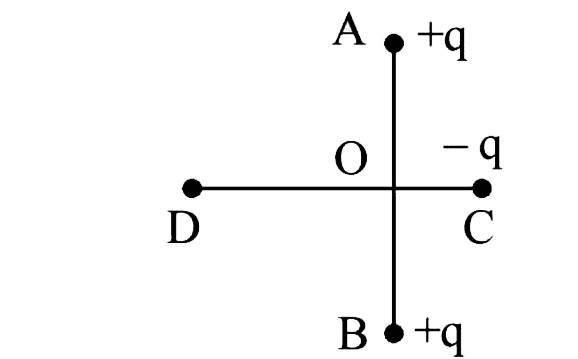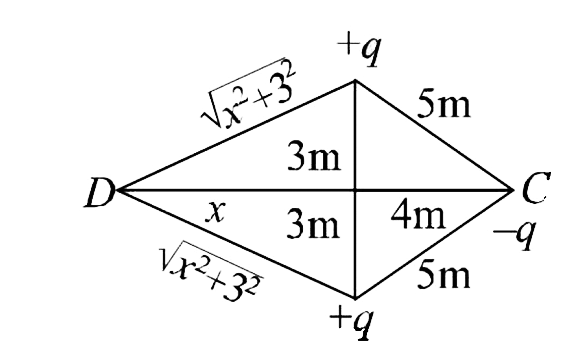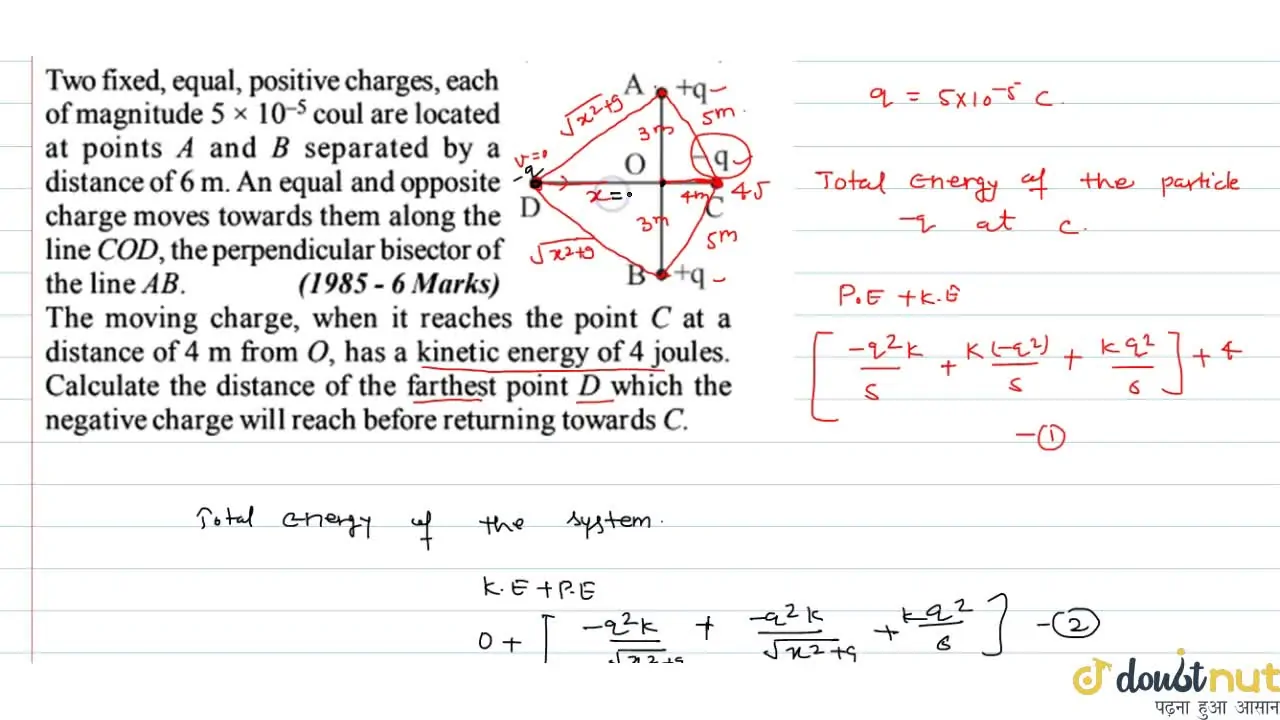Two fixed, equal, positive charges, each of magnitude coul are located at points A and B separated by a distance of 6m. An equal and opposite charge moves towards them along the line COD, the perpendicular bisector of the line AB.
The moving charge, when it reaches the point C at a distance of 4m from O, has a kinetic energy of 4 joules. Calculate the distance of the farthest point D which the negative charge will reach before returning towards C.

The correct Answer is:D
Total energy of the system of three charges when the charge is at C
…(i)

Final energy of the system of three charges when is at D and momentarily at rest
...(ii)
By the principle of conservation of energy from (i) and (ii), we get
Related Playlists
- BOOK - SUNIL BATRA (41 YEARS IITJEE PHYSICS)CHAPTER - ELECTROSTATICSEXERCISE - Subjective Problems2videos
ELECTROSTATICS
- BOOK - SUNIL BATRA (41 YEARS IITJEE PHYSICS)CHAPTER - ELECTROSTATICSEXERCISE - Comprehension Based Questions2videos
ELECTROSTATICS
- BOOK - SUNIL BATRA (41 YEARS IITJEE PHYSICS)CHAPTER - ELECTROMAGNETIC INDUCTION AND ALTERNATING CURRENTEXERCISE - JEE Main And Advanced107videos
ELECTROMAGNETIC INDUCTION AND ALTERNATING CURRENT
- BOOK - SUNIL BATRA (41 YEARS IITJEE PHYSICS)CHAPTER - MODERN PHYSICSEXERCISE - MCQ (One Correct Answer1videos
MODERN PHYSICS
Similar Questions
Two equal and opposite charges separated by a finite distance is
View SolutionAt any point on the right bisector of line joining two equal and opposite charges
View SolutionTwo point charges Q and −Q/4 are separated by a distance X. Then
 .View Solution
.View SolutionTwo charges 10μCand−10μC are placed at points A.andB separated by a distance of 10 cm. Find the electric field at a point P on the perpendicular bisector of AB at. a distance of 12 cm from its middle point.
View SolutionTwo point charges of 1μCand−1μC are separated by a distance of 100 Å. A point P is at a distance of 10 cm from the midpoint and on the perpendicular bisector of the line joining the two charges. The electric field at P will be
View SolutionTwo equal charges q of opposite sign are separated by a small distance 2a,The electric intensity E at a point on the perpendicular bisector of theline joining the two charges at a very large distance r form the line is
View SolutionTwo point charge Q and 4Q are fixed at a distance of 12cm from each other. Sketch lines of force and locate the neutral point, if any .
View SolutionWhat will be the kinetic energy of the charge after it has moved a distance x?
View SolutionThe two point charges 4μC and 1μC are separated by a distance of 2 m in air. Find the point on the line joining the charges at which net electric field of the system is zero.
View SolutionTwo point charges +5μCand−2μC are kept at a distance of 1m in free space. The distance between the two zero potential points on the line joining the charges is
View Solution


